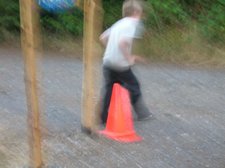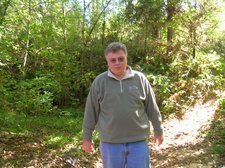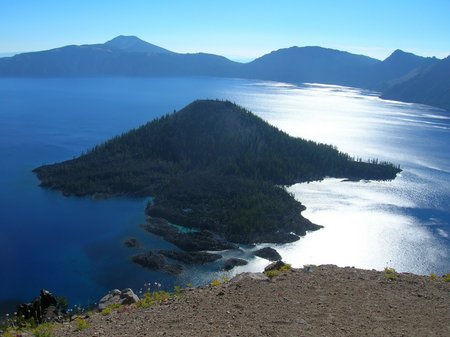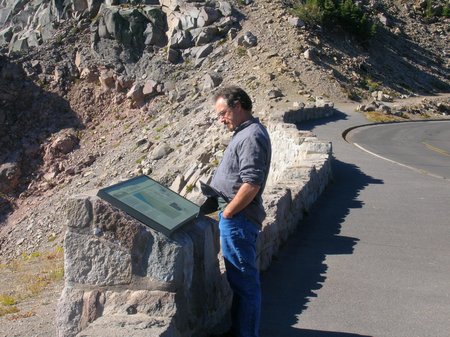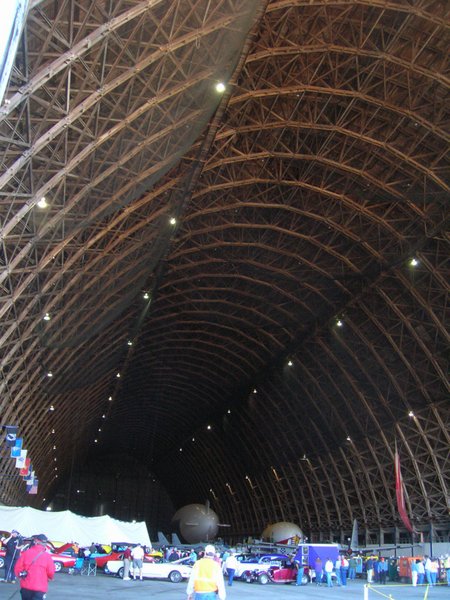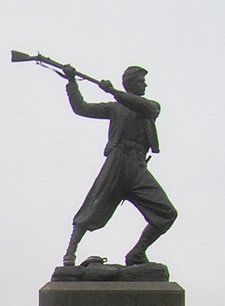Saturday Sept. 24, 2005. Saturday morning Dave and Keli and Karis and Ben and I pile into their van and head for Crater Lake. Traveling with Ben is far easier than it used to be, apparently, but partly this is because they are working from long experience. One of them tells me, the secret is to always have one more thing in reserve, and they have a whole bag of tricks ready.
Ben’s game boy keeps him happy for hours at a time. (Because of the noises the game boy makes, they humorously refer to it as the GDGB.) And there is the miniature TV (it plugs into the car’s cigarette lighter) that plays DVDs that both Ben and Karis like to watch. Those are the two main tricks that stick in my mind. I know there are others. Karis, bless her, amuses herself.
